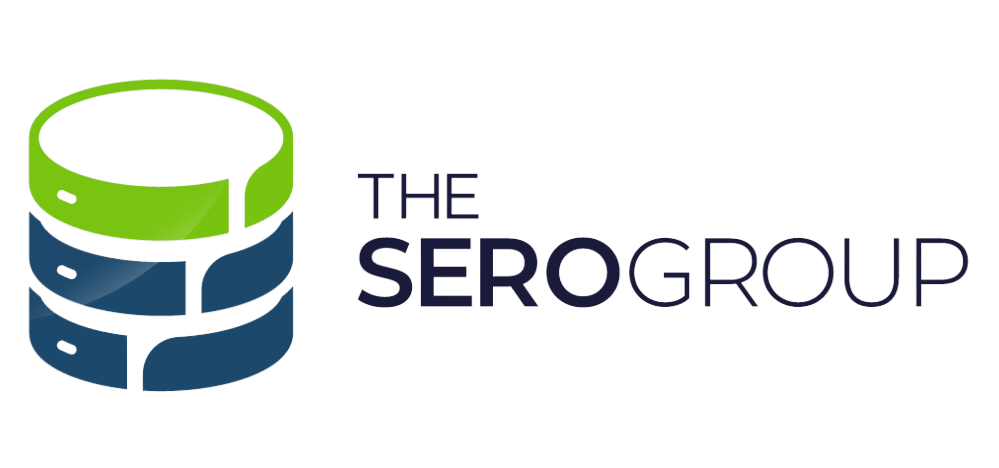Five Ways to Protect Your SQL Server from Cybersecurity Threats

Microsoft SQL Server is mission-critical for many organizations, storing customer data, financial records, and essential business operations. That makes it a prime target for cybercriminals. SQL Server faces serious risks—from insider threats to ransomware—that can lead to data breaches and business disruptions.
If your organization relies on SQL Server, you can’t afford to take its security for granted. This post outlines key strategies to secure your SQL Server and strengthen your organization’s overall data protection efforts.
1. Harden Your SQL Server Configuration
Out-of-the-box installations of SQL Server aren’t secure by default. Misconfigured servers are one of the top causes of successful cyberattacks, and even small oversights—like unnecessary enabled features or open ports—can provide a foothold for attackers.
Start with a hardening baseline, such as the CIS® Benchmarks™ for SQL Server. These community-developed best practices provide a comprehensive checklist for reducing risk—from setting appropriate authentication requirements to disabling unused services and ensuring proper auditing configurations.
Many organizations are surprised by how many of their SQL Server settings fall short of these benchmarks. Evaluating against their standard is a low-cost, high-impact step toward improving your security posture.
2. Keep Patches and Updates Current
SQL Server patches and cumulative updates don’t just include performance improvements—they also fix known vulnerabilities that cybercriminals can exploit.
Whether you’re running SQL Server on-premises or in the cloud, patch management needs to be part of your ongoing operations strategy. Implement a structured update process that includes:
- Testing patches in staging before production
- Coordinating patch timing with other application dependencies
- Automating patch notifications and scheduling when possible
Waiting too long to apply patches can leave you vulnerable for months, especially as exploits for known issues are often publicly available shortly after disclosure.
3. Implement Role-Based Access Control (RBAC)
Not everyone needs full access to everything. One of the simplest and most effective ways to reduce risk is limiting access privileges based on the principle of least privilege.
Use role-based access control to ensure users only have access to the databases, objects, and actions necessary for their job. Avoid using sysadmin-level accounts unless absolutely necessary, and regularly audit permissions to identify over-provisioned users.
In addition, always use Windows Authentication where possible. It integrates better with Active Directory policies and enables centralized password and identity management.
4. Monitor and Audit Database Activity
Even well-configured SQL Server environments can be breached. That’s why real-time monitoring and auditing are critical for detecting threats early and responding quickly.
SQL Server’s built-in audit features allow you to track logins, permission changes, data access, and schema modifications. This data can help identify unusual patterns that may indicate a compromised account or insider threat.
In our blog post on SQL audit features, we highlighted how auditing can deter malicious activity, support compliance efforts, and provide vital information during forensic investigations.
For enhanced protection, consider integrating audit logs with a Security Information and Event Management (SIEM) platform for centralized monitoring and alerting.
5. Protect Against Ransomware and Data Exfiltration
Ransomware attacks against database systems are becoming more sophisticated—and more costly. In addition to encrypting your data, some threat actors now exfiltrate data and threaten public leaks if a ransom isn’t paid.
To protect your SQL Server:
- Segment your network to prevent lateral movement
- Regularly back up your databases and test your recovery process
- Encrypt sensitive data both at rest and in transit
- Use endpoint protection and file integrity monitoring tools
Don’t forget physical security too—especially if you host SQL Server on-premises. Server room access should be restricted, monitored, and logged.
Need Help Securing Your SQL Servers?
SQL Server security is a constantly evolving challenge—and it’s easy to miss critical vulnerabilities when you’re focused on daily operations.
At The SERO Group, we specialize in helping organizations like yours secure their SQL Server environments, identify weaknesses, and stay ahead of threats. Whether you need a comprehensive SQL Server CIS® Benchmarks™ Assessment or want to take our free SQL Server Security Self-Assessment to get started, we’re here to help.
Let’s work together to protect your data and build a more secure SQL Server environment. Contact us today to learn more.


70 Responses
графт [url=http://www.peresadka-volos-moskva22.ru]графт[/url] .
склад для временного хранения вещей в москве [url=http://veshi-hranenie.ru]http://veshi-hranenie.ru[/url] .
графт пересадка волос [url=https://www.volosi-sadit12.ru]https://www.volosi-sadit12.ru[/url] .
диплом о среднем специальном образовании купить [url=https://orikdok-1v-gorode-mahachkala-5.ru]диплом о среднем специальном образовании купить[/url] .
win1 aviator [url=www.1win22030.ru]www.1win22030.ru[/url] .
купить диплом в пскове [url=https://www.orikdok-2v-gorode-volgograd-34.online]https://www.orikdok-2v-gorode-volgograd-34.online[/url] .
Купить диплом ВУЗа!
Мы предлагаем документы учебных заведений, которые находятся в любом регионе России.
[url=http://good-diplom.ru/kupit-diplom-s-garantiej-kachestva-i-vneseniem-v-reestr/]good-diplom.ru/kupit-diplom-s-garantiej-kachestva-i-vneseniem-v-reestr/[/url]
пересадка волос москва [url=https://volosi-sadit11.ru]пересадка волос москва[/url] .
купить диплом в калининграде [url=http://www.orikdok-2v-gorode-smolensk-67.online]http://www.orikdok-2v-gorode-smolensk-67.online[/url] .
Приобрести диплом о высшем образовании!
Наши специалисты предлагаютвыгодно и быстро заказать диплом, который выполняется на оригинальном бланке и заверен мокрыми печатями, штампами, подписями. Диплом пройдет любые проверки, даже с использованием профессиональных приборов. Достигайте цели быстро с нашим сервисом- [url=http://rantcave.com/showthread.phptid=25980/]rantcave.com/showthread.phptid=25980[/url]
мостбет скачать приложение на андроид [url=https://mostbet22033.ru/]мостбет скачать приложение на андроид[/url] .
mostbet личный кабинет [url=https://www.mostbet22034.ru]mostbet личный кабинет[/url] .
профессиональное продвижение сайтов [url=www.prodvizhenie-sajtov-v-moskve231.ru]профессиональное продвижение сайтов[/url] .
mostbet skachat 2024 [url=http://mostbet22032.ru]http://mostbet22032.ru[/url] .
продвижение сайтов в москве [url=https://prodvizhenie-sajtov-v-moskve232.ru]продвижение сайтов в москве[/url] .
раскрутка сайта москва [url=https://prodvizhenie-sajtov-v-moskve233.ru/]раскрутка сайта москва[/url] .
Купить документ о получении высшего образования можно в нашем сервисе. Мы оказываем услуги по продаже документов об окончании любых ВУЗов Российской Федерации. Вы сможете получить диплом по любой специальности, любого года выпуска, включая документы образца СССР. Гарантируем, что в случае проверки документов работодателями, подозрений не возникнет. [url=http://diplomt-v-samare.ru/kupit-diplom-o-visshem-obrazovanii-otzivi-pokupatelej-2/]diplomt-v-samare.ru/kupit-diplom-o-visshem-obrazovanii-otzivi-pokupatelej-2/[/url]
mostbet skachat 2024 [url=http://mostbet22031.ru/]mostbet skachat 2024[/url] .
Купить диплом института по выгодной цене можно, обращаясь к проверенной специализированной фирме. Мы оказываем услуги по продаже документов об окончании любых университетов Российской Федерации. Приобрести диплом университета– [url=http://telecomgurus.in/companies/diplomy-grup-24/]telecomgurus.in/companies/diplomy-grup-24[/url]
Заказать диплом ВУЗа!
Приобрести диплом ВУЗа. Приобретение официального диплома через проверенную и надежную фирму дарит множество преимуществ. Данное решение дает возможность сберечь время и серьезные финансовые средства. [url=http://aqtanmomon.copiny.com/question/details/id/1094521/]aqtanmomon.copiny.com/question/details/id/1094521[/url]
Быстро заказать диплом об образовании!
Покупка подходящего диплома через проверенную и надежную компанию дарит ряд достоинств. Быстро и просто заказать диплом ВУЗа у сильной организации: [url=http://doks-v-gorode-surgut-86.online/]doks-v-gorode-surgut-86.online[/url]
бк 1 win [url=1win22064.ru]1win22064.ru[/url] .
1вин бонусы казино [url=https://www.1win3007.ru]https://www.1win3007.ru[/url] .
1win casino aviator [url=http://1win22063.ru/]1win casino aviator[/url] .
Мы готовы предложить дипломы психологов, юристов, экономистов и любых других профессий по приятным ценам. Стоимость зависит от той или иной специальности, года получения и образовательного учреждения: [url=http://rentry.co/3dq229be/]rentry.co/3dq229be[/url]
Заказать документ о получении высшего образования вы имеете возможность у нас в Москве. Купить диплом ВУЗа по доступной цене возможно, обращаясь к надежной специализированной компании. [url=http://physmathforum.flybb.ru/viewtopic.phpf=12&t=1304/]physmathforum.flybb.ru/viewtopic.phpf=12&t=1304[/url]
Приобрести диплом о высшем образовании мы поможем. Заказать справку – [url=http://diplomybox.com/zakazat-spravku/]diplomybox.com/zakazat-spravku[/url]
бонус за регистрацию без депозита с выводом [url=https://1win22043.ru]https://1win22043.ru[/url] .
Мы можем предложить дипломы любой профессии по доступным ценам. Купить диплом училища — [url=http://kyc-diplom.com/diplom-uchilishcha.html/]kyc-diplom.com/diplom-uchilishcha.html[/url]
скачать мостбет кз [url=https://mostbet22036.ru/]скачать мостбет кз[/url] .
Заказать диплом академии !
Приобретение диплома университета России в нашей компании – надежный процесс, потому что документ заносится в реестр. Заказать диплом любого института [url=http://diplom-club.com/gde-kupit-diplom-o-visshem-obrazovanii-otzivi-kachestv/]diplom-club.com/gde-kupit-diplom-o-visshem-obrazovanii-otzivi-kachestv[/url]
регистрация в бк мостбет [url=https://mostbet22035.ru]https://mostbet22035.ru[/url] .
Покупка документа о высшем образовании через проверенную и надежную компанию дарит много достоинств. Заказать диплом: [url=http://ooyy.com/read-blog/819_kupit-diplom-11-klassov.html]ooyy.com/read-blog/819_kupit-diplom-11-klassov.html[/url]
1вин вход в личный кабинет [url=1win22067.ru]1win22067.ru[/url] .
сделать проект перепланировки квартиры в москве [url=www.proekt-pereplanirovki-kvartiry11.ru]www.proekt-pereplanirovki-kvartiry11.ru[/url] .
купить трансформаторы тсл [url=http://suhie-transformatory-kupit2.ru/]http://suhie-transformatory-kupit2.ru/[/url] .
ломбарды часов rolex [url=http://prodaja-rolex-chasi11.ru]http://prodaja-rolex-chasi11.ru[/url] .
казино мостбет [url=https://mostbet22038.ru]https://mostbet22038.ru[/url] .
промокод 1xставка [url=https://www.1win22071.ru]промокод 1xставка[/url] .
мостбет [url=www.mostbet22039.ru]мостбет[/url] .
Купить диплом о высшем образовании!
Мы готовы предложить документы любых учебных заведений, которые расположены в любом регионе России.
[url=http://diplomgorkiy.com/kupit-diplom-s-zaneseniem-v-reestr-bistro-i-bezopasno-5/]diplomgorkiy.com/kupit-diplom-s-zaneseniem-v-reestr-bistro-i-bezopasno-5/[/url]
Купить диплом ВУЗа по доступной стоимости возможно, обращаясь к надежной специализированной компании. Заказать документ института вы можете в нашем сервисе. [url=http://orikdok-1v-gorode-krasnoyarsk-24.online/]orikdok-1v-gorode-krasnoyarsk-24.online[/url]
1win вход россия [url=http://1win22068.ru/]http://1win22068.ru/[/url] .
Мы изготавливаем дипломы любой профессии по разумным тарифам. Заказ документа, который подтверждает обучение в ВУЗе, – это грамотное решение. Купить диплом университета: [url=http://4me.zone/read-blog/64_kupit-diplom-11-klassov.html/]4me.zone/read-blog/64_kupit-diplom-11-klassov.html[/url]
Приобрести диплом возможно через сайт компании. [url=http://orikdok-3v-gorode-mahachkala-5.online/]orikdok-3v-gorode-mahachkala-5.online[/url]
mostbet регистрация [url=www.mostbet22042.ru]www.mostbet22042.ru[/url] .
получить деньги за регистрацию без вложений с выводом на карту [url=1win22078.ru]получить деньги за регистрацию без вложений с выводом на карту[/url] .
обустройство парковочного места [url=http://www.betonnaya-parkovka-1122.ru]обустройство парковочного места[/url] .
1win букмекерская контора официальный [url=https://1win22077.ru/]1win букмекерская контора официальный[/url] .
1хставка казино [url=https://1win22076.ru/]1хставка казино[/url] .
Мы изготавливаем дипломы любой профессии по приятным тарифам. Мы предлагаем документы техникумов, расположенных на территории всей РФ. Документы делаются на бумаге самого высокого качества. Это дает возможность делать государственные дипломы, не отличимые от оригиналов. [url=http://orikdok-4v-gorode-tula-71.online/]orikdok-4v-gorode-tula-71.online[/url]
как отыграть бонусный баланс на 1win [url=http://1win14001.ru]как отыграть бонусный баланс на 1win[/url] .
mostbet скачать 2024 [url=http://mostbet22041.ru]http://mostbet22041.ru[/url] .
1win pro [url=1win14003.ru]1win pro[/url] .
мостбет официальный сайт вход букмекерская контора [url=https://www.mostbet22044.ru]https://www.mostbet22044.ru[/url] .
продать часы ролекс [url=www.prodaja-rolex-chasi13.ru/]продать часы ролекс[/url] .
мостбет. вход. [url=www.mostbet22043.ru]www.mostbet22043.ru[/url] .
uefa champions league [url=www.footballnews.store]www.footballnews.store[/url] .
займ оформить онлайн [url=www.investinq.ru]www.investinq.ru[/url] .
1 вин официальный сайт вход [url=https://1win22080.ru/]https://1win22080.ru/[/url] .
продать ролекс бу оригинал [url=http://www.prodaja-rolex-chasi13.ru]продать ролекс бу оригинал[/url] .
Приобрести диплом университета по невысокой цене вы сможете, обращаясь к проверенной специализированной компании. Приобрести документ института можно у нас в столице. [url=http://orikdok-4v-gorode-kostroma-44.ru/]orikdok-4v-gorode-kostroma-44.ru[/url]
mostbet link [url=http://mostbet22045.ru]http://mostbet22045.ru[/url] .
mostbet az virtual oyunlar [url=http://mostbet3042.ru]mostbet az virtual oyunlar[/url] .
Приобрести диплом под заказ можно используя официальный сайт компании. [url=http://orikdok-3v-gorode-kurgan-45.online/]orikdok-3v-gorode-kurgan-45.online[/url]
mostbet bonus şərtləri [url=http://mostbet3042.ru/]mostbet bonus şərtləri[/url] .
лига ставок футбол [url=http://www.footballnews.store]http://www.footballnews.store[/url] .
займ оформить онлайн [url=www.investinq.ru]www.investinq.ru[/url] .
один вин [url=www.1win22080.ru]www.1win22080.ru[/url] .
мостбет официальный сайт узбекистан [url=http://mostbet3030.ru]мостбет официальный сайт узбекистан[/url] .
Comments are closed.